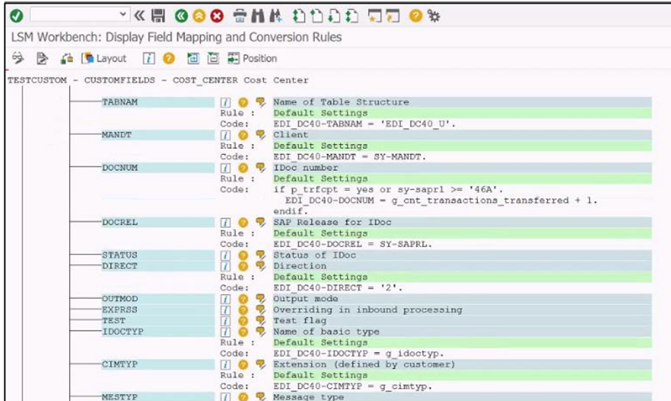Ways of Migrating Data
In this blog, we will describe ways to migrate data.

It should not be wrong to describe data, which is the most important element in the use of digital solutions, as the capital of systems. For businesses that want to add value to themselves, the correct use of this capital acquired over time and the correct transfer between systems are of vital importance for the processes to proceed without errors.
Whether it's a new business that prefers using SAP from scratch, or an SAP user who changes version or format, the purpose of data migration is not just to move or transform data from one system/form to another; to ensure that the data carried is of high quality, suitable for use, and supports the organization's core business processes and operational goals.
Data migration is one of the core processes in a SAP application. Determining the right data set, or even the unused data set, converting the data to the desired format, extracting it from the source system and finally uploading it to the SAP system is a long and careful process that does not only require SAP knowledge.
In this context, we will review our options by briefly mentioning three different data migration methods that we can use.
LSMW (Legacy System Migration Workbench) is a tool used to migrate data from non-SAP structures to the SAP system. This transfer can be a one-time transfer or a periodically running transfer. LSMW is a 14-step process that will be tailored to the requirements of the data expected to be transported.

LSMW is mostly preferred for data transfer from non-SAP systems to R3 systems. Although it can be used for S4/Hana On Premise, it is not recommended by SAP.
It also allows collective maintenance of the existing data in the system.
According to the needs of the user, it can provide data transfer by using direct input, batch input and inbound IDOC methods.
Migration Cockpit is the central repository tool that handles the SAP S/4HANA upgrade of existing legacy SAP solutions. It allows you to download predefined Excel templates so you can easily create old data in this format and upload it to S/4HANA using the Migration Cockpit. Importing and Mapping files is quite easy compared to LSMW.
.png)
It is mostly preferred for transferring data from scratch to SAP S/4HANA, project transfers between DEV, Q and Live systems, and direct transfer options, while transferring data directly from S4/Hana or S4/Hana Cloud to another S4/Hana system It is not designed for.

Rapid Data Migration is basically a migration framework that starts from spreadsheets, then continues with mapping spreadsheet contents to the SAP data structure, validating record values and dependencies on other fields or records, and finally uploading them to the ERP system. Installation mostly uses BAPI and IDoc processing. It can be considered as a disadvantage that it does not cover all data objects and infrastructures. However, in terms of line counts and errors, there is also the advantage of automated reporting using both BAPI and IDoc.
.png)
SAP RDM provides a fast, consistent transfer structure for successful data migration and includes:
- Mapping all source and target fields,
- Verifying that the target data matches the source data values,
- Verifying that source data is used appropriately in new programs,
- The most accurate migration of third-party data to the new database.
To help you decide which method you should choose, let's list the features that all three methods have from different perspectives.
| MC | RDM | LSMW | |
| Target System | All SAP S4/Hana Implementation Options | SAP S4/Hana | SAP ERP |
| Source System | SAP and non-SAP Systems | ||
| Data Provision | Direct import from SAP systems with files, drafts and RFC | Direct transfer with files, scripts, databases using ODBC | File |
| SAP Support | Available | Available | Unavailable |
| License Cost | No file and direct transfer, but applicable to cloud migrations | Not available in Basic Version, but applicable for different services such as quality, cleaning | None |
| Transport Objects | More than 200 transport objects, ready-made excel templates for ERP resources | More than 60 transport objects, ready-made excel templates for ERP resources | None |
| Providing Industry-Specific Solutions | Available | Unavailable | Unavailable |
| Flexibility | Available | Available | Available |
| Road map | Available | Unavailable | Unavailable |
| Data Cleaning | User provides already cleaned files | Subject to SAP Data Services product license | User provides already cleaned files |
| Setup | DMIS must be installed on the source system for direct transfer | Additional Server must be installed and Idoc / ALE configured | Should be standard IDocs/ALE configuration |
| Simulation | Available | Depends on transport object | Depends on the transport method |
| Need development expertise? | ABAP for complex rules only | ODBC, SQL | ABAP for mapping and complex rules |
| UI | SAP Fiori, SAP GUI | Proprietary UI | SAP GUI |
| Data generation tool in S4/Hana | SAP standard APIs, RAP/BO | BAPI, IDoc | BAPI, Idoc and standard transaction log |


 Gülper Güripek
Gülper Güripek


